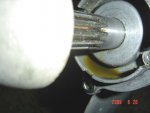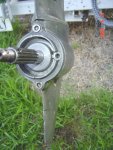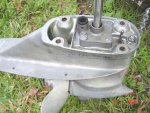Petesafloat
Recruit
- Joined
- Feb 6, 2014
- Messages
- 3
I have a 1987 35 hp Force outboard. Leaking oil from lower unit water intake and small amount of water in gear case oil. Figure I will drop lower unit and pressure test for leaking seals (replace impeller same time). Looking at Clymer Force manual (1984-1994, 25-50 hp all same), it says basically, disassemble entire gear housing and press out seals from now empty gear case housing. This is my dead last choice to solve problem. You tube videos show several methods to remove seals on other outboards without complete disassembly. Drilling carefully into seals, inserting screws and pulling out from above. This appears feasible for the drive shaft seals as drive shaft is removable with unit still assembled. Shift rod seal is the big question. Since it is not removable without complete disassembly, getting the seal out from above could be a real problem. Anyone ever replaced seals on one of these models without complete disassembly? Especially the shift rod seal. How far down in the housing does the seal sit and how much clearance is there to try the "screw" extraction method? Figure I'd give the forum a shot before tearing things apart. Any advice (besides, "Get an OMC or Mercury" ;>)) would be greatly appreciated.
Last edited:























